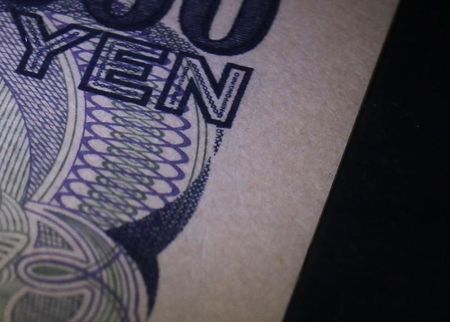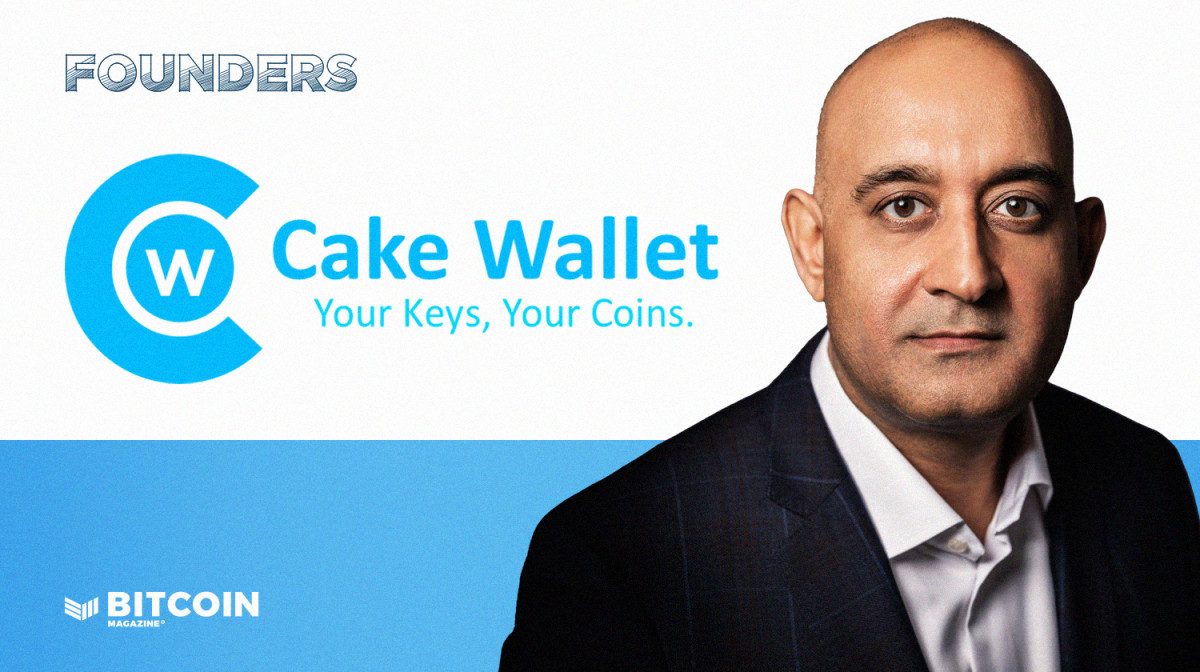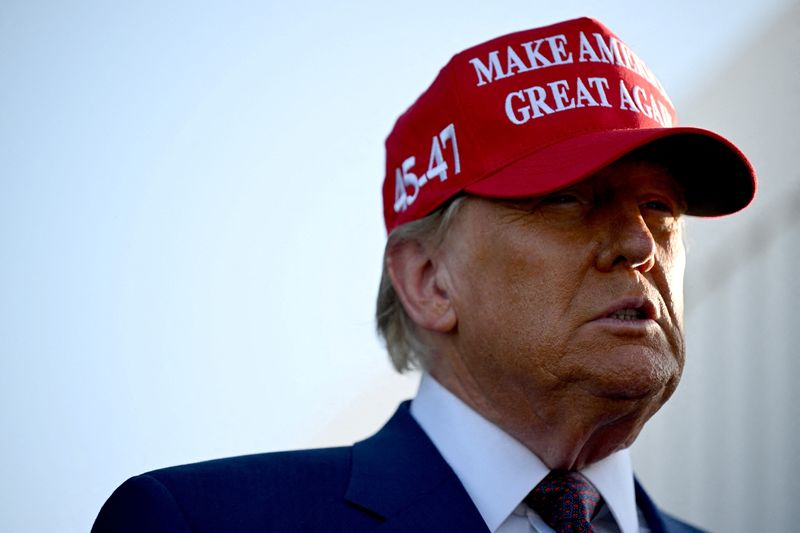Month: November 2024
Japanese yen expected to slide as US policy drives dollar higher – BofA
Post Content
Maximizing Bitcoin Accumulation – Beyond the Benchmark
Bitcoin has consistently outperformed all major asset classes over the past decade, solidifying its role as the benchmark for digital asset investors. For those committed to Bitcoin’s long-term vision, the ultimate financial goal often shifts from acquiring more dollars to maximizing their Bitcoin holdings.
Bitcoin is the Hurdle Rate
Bitcoin is to digital assets what treasury bonds are to the legacy financial system—a foundational benchmark. While no investment is without risk, Bitcoin held in self-custody eliminates counterparty risk, dilution risk, and other systemic risks common in traditional finance.
With BTC outperforming every other asset class in 9 of the past 12 years (by orders of magnitude), it’s no surprise that it has usurped treasury bonds as the “risk free rate” in the minds of many investors – especially those knowledgeable about monetary history and thus the appeal of Bitcoin’s verifiable scarcity.
Another way to phrase this would be that the financial objective of digital asset investors is to acquire more BTC rather than acquire more dollars. All investments or spending are viewed through the lens of BTC being the opportunity cost.
MicroStrategy has demonstrated what this looks like in the corporate world with their new KPI: BTC Yield. To quote from their September 20th, 8-K form: “The Company uses BTC Yield as a KPI to help assess the performance of its strategy of acquiring bitcoin in a manner the Company believes is accretive to shareholders.” MicroStrategy has taken full advantage of the tools available to them as a multi-billion dollar public company: access to low interest rate debt and the ability to issue new shares. This KPI shows that they are acquiring more BTC per outstanding share despite the fact that they are engaging in the traditionally dilutive activity of new share issuance.
Mission accomplished: they are acquiring more bitcoin.
But MicroStrategy has an advantage that the average fund manager or retail investor does not: they are a publicly traded company with the ability to tap into capital markets at little to no relative cost. Individual holders are unable to issue shares into the public market in order to raise capital and acquire BTC. Nor can we issue convertible notes and borrow dollars at a near zero % interest rate.
So that begs the question: how can we accumulate more bitcoin? How can we have a positive ‘BTC Yield’?
Bitcoin Mining
Bitcoin miners acquire BTC by contributing computational power to the Bitcoin network, and receiving a greater amount of BTC than what it costs in electricity to operate their machine(s). Now this is easier said than done. The Bitcoin protocol enforces a predetermined supply schedule using “difficulty adjustments” – meaning that more computational power dedicated towards Bitcoin mining results in the finite block rewards getting split up into smaller pieces.
The most effective Bitcoin miners are those that maximize their computational power while minimizing their operational costs. This is accomplished by acquiring the latest, most-efficient Bitcoin mining hardware, and operating with the lowest possible electricity rate.
Under current market conditions (as of 11/21/2024), 1 bitcoin has a price of ~$98,000. However, an Antminer S21 Pro mining with an electricity rate of $0.078/kWh is able to produce 1 BTC for ~$40,000 in electricity. This is an operating margin of nearly 145%. A business is typically considered to have “healthy profit margins” if they are in the 5-10% range – mining beats this easily. This is in spite of the fact that as of the April 2024 Bitcoin halving, they earn half as much BTC per unit of compute.
Price Growth Outpacing Difficulty Growth
The price of a financial asset – specifically bitcoin – is set at the margin. This means that the asset’s price is determined by the most recent transactions between buyers and sellers. In other words, the price reflects what the last buyer is willing to pay and what the last seller is willing to accept.
This, in part, is what enables BTC’s notoriously volatile price action. A lack of sellers at price X means buyers must bid the price higher than X in order to find the next marginal seller. Inversely, a lack of buyers at price X means a seller must lower their ask to find the next marginal buyer. BTC can quickly move up or down based on a lack of sellers or buyers in a specific range.
Consequently, the velocity at which the Bitcoin price can move is much higher than that of network mining difficulty. Substantial growth in network mining difficulty is not achieved by marginal bid/ask spreads, it is achieved by the culmination of ASIC manufacturing, energy production, and mining infrastructure development. There is not shortcutting the time and human capital necessary to increase the total computational power on the Bitcoin network.
This dynamic is what creates opportunities for Bitcoin miners to accumulate vast amounts of bitcoin.
The chart here illustrates the explosive growth of Bitcoin mining profitability that takes place during bull markets. “Hashprice” measures the amount of revenue that Bitcoin miners earn per unit of compute on a daily basis. On a year-over-year basis, hashprice has increased by more than 300% at the height of each bitcoin mining cycle. This means that miners have had their profit margins more than triple in a 12-month span.
Over the long-run this metric trends down as more entities begin mining bitcoin, miners upgrade to more powerful & efficient machines, and the block subsidy is cut in half every four years. However, during bull markets, the combination of the forces that are a positive catalyst for mining difficulty (and thus net-negative for mining profitability) pale in comparison to the rapid growth in the price of bitcoin.
Price Volatility in Bitcoin Mining Hardware
In addition to wider profit margins during bull markets, Bitcoin miners have the simultaneous benefit of the fact that ASIC prices tend to move in tandem with the Bitcoin price. During the 2020 – 2024 cycle, the Antminer S19 (most efficient ASIC at the time) began trading at ~$24/T. By November 2021 – when the BTC price was peaking – they began trading for north of $120/T.
Bitcoin mining hardware retaining resale value is becoming increasingly the case with each new generation of hardware. In the early days of Bitcoin mining, technological advancements were swift and forceful – to the point that new ASICs would make older models obsolete overnight. However, the marginal gains of new ASICs have diminished to the point that older models are able to remain competitive for multiple years after release.
Since the S19 was launched in 2020 and retains a non-zero market price today, it is reasonable to expect that the S21 line of machines will be able to retain value for even longer. This gives miners a significant leg-up when it comes to accumulating bitcoin, because the upfront cost of purchasing machines is no longer “sunk”. Their machines have a price, one that is correlated to bitcoin, and there is a resource available to get liquidity.
Blockware Marketplace
Blockware developed this platform to enable any investor – institutional or retail – the opportunity to gain direct exposure to Bitcoin mining. Users of the marketplace are able to purchase Bitcoin mining rigs that are hosted at one of Blockware’s tier 1 data centers and have access to industrial power prices. These machines are online already, eliminating lengthy lead times that have historically caused some miners to miss out on those key months in the cycle in which price is outpacing network difficulty.
Moreover, this platform is built by Bitcoiners, for Bitcoiners. Which means that machines are purchased using Bitcoin as the medium of exchange, and mining rewards are never held by Blockware – they are sent directly to the users own wallet.
Lastly, this provides miners with the aforementioned opportunity, but not obligation, to sell their machines at any time and price. This enables miners to capitalize on volatility in ASIC prices, recoup the cost of their machines, and accumulate more BTC faster than they would with a traditional “pure play” approach.
This innovation removes the obstacles that have historically made hosted mining difficult, enabling miners to concentrate on the mission: accumulating more Bitcoin.
For institutional investors looking for bulk pricing on mining hardware, contact the Blockware team directly.
Remembering John McAfee’s Bullish Bitcoin Price Bet as we near $100K Milestone
Follow Mark on X.
Ah, Bitcoin—a digital enigma that dances between brilliance and bafflement, much like a British summer deciding whether to rain or shine. As we teeter on the brink of the $100,000 milestone, it’s impossible not to cast our minds back to the late John McAfee: antivirus mogul, libertarian firebrand, and a man whose eccentricity made the Mad Hatter look like an accountant.
In the distant, carefree days of 2017—when masks were for surgeons and Zoom was just an onomatopoeia—McAfee made a proclamation that would make even Nostradamus raise an eyebrow. He boldly wagered that Bitcoin would soar to $500,000 within three years. And if not? Well, let’s just say he offered to partake in a culinary act so unspeakable, it would make a cannibal blush. National television executives must have been on standby, salivating at the potential ratings bonanza.
By 2019, instead of backpedaling like any sensible person who’d had one too many at the pub, McAfee doubled down. He upped his prediction to a cool $1 million per Bitcoin, asserting that the $100,000 mark would merely be the opening act—the financial equivalent of a warm-up comedian before the headliner brings the house down.
Let’s not forget McAfee’s infamous bullish proclamation: that once Bitcoin hits the $100,000 mark, it would be like unlocking the floodgates of a financial Hoover Dam. At that pivotal price point, he believed, Bitcoin wouldn’t just stroll to $1 million—it would sprint. At the time, there were no Bitcoin ETFs gracing the portfolios of traditional investors, no nations like El Salvador adopting Bitcoin as legal tender, no corporate titans like MicroStrategy hoarding it like digital dragons atop golden hordes, and certainly no whispers of U.S. Bitcoin strategic reserves. John didn’t have a crystal ball—though I wouldn’t have been surprised if he’d claimed to—but he keenly understood the game theory behind Bitcoin’s design. He grasped that the underlying security, the allure, and the network effect of its mathematical genius were not just revolutionary; they were inevitable. For McAfee, it was never a matter of “if” but “when” the world would catch on.
Critics scoffed, economists guffawed, and the rest of us watched with the same morbid fascination we reserve for reality TV and train wrecks. Was McAfee a visionary or just a man who’d spent a bit too much time sampling his own supply of eccentricity?
Now, as Bitcoin flirts coquettishly with the $100,000 threshold, perhaps it’s time to reconsider. Maybe old John wasn’t entirely off his rocker—perhaps just teetering on the edge with a cocktail in hand. His timing was about as precise as a broken sundial, but the essence of his prediction might yet hold water.
You see, McAfee understood something fundamental about Bitcoin: its potential to disrupt, to redefine, to turn the financial world on its head like a particularly aggressive yoga instructor. He saw the floodgates that could open, unleashing a torrent of innovation and, yes, wealth.
Of course, trusting McAfee’s predictions was always a bit like trusting a fox to guard the henhouse—or perhaps more aptly, trusting a software tycoon with a penchant for tropical escapades to give sound financial advice. But even a broken clock is right twice a day, and perhaps a maverick is right once in a blue moon.
As we stand on this precipice, wallet in one hand and skepticism in the other, let’s tip our hats to John McAfee. Not because he was necessarily correct, but because he had the audacity to dream big, to stake his reputation (and other unmentionables) on a future that seemed ludicrous to many.
In a world that often feels like it’s been scripted by a committee of pessimists, McAfee was a wild card—a joker in the deck who reminded us that fortune favors the bold, or at least makes for an entertaining story.
So here’s to you, John. Your timing was off, your methods were unorthodox, and your promises were—thankfully—unfulfilled in certain respects. But as Bitcoin edges toward that $100,000 milestone, perhaps your spirit of defiant optimism wasn’t so misplaced after all.
In the end, maybe it’s not about the destination or even the journey, but the colorful characters we meet along the way who make the whole saga worth following. And if nothing else, McAfee ensured that the tale of Bitcoin was never short of intrigue, humor, and a dash of the absurd.
This article is a Take. Opinions expressed are entirely the author’s and do not necessarily reflect those of BTC Inc or Bitcoin Magazine.
Use Bitcoin Easily And Privately With Cake Wallet
Company Name: Cake Wallet
Founders: Vik Sharma
Date Founded: October 2017
Location of Headquarters: Saint Kitts and Nevis (and staff is remote)
Number of Employees: 14
Website: https://cakewallet.com/
Public or Private? Private
When Vik Sharma isn’t serving as the CEO of Liberty Steel, he’s focused on making bitcoin and other cryptocurrencies easier and more private to use via Cake Wallet.
Sharma believes that a product must be user-friendly if it is to be adopted widely, which is why usability is at the center of the Cake Wallet mission.
“The very broad mission of Cake Wallet is to bring cryptocurrency to the masses, to enable people to easily send, receive, hold, swap, on-ramp, and off-ramp crypto like you would with Venmo or PayPal,” Sharma told Bitcoin Magazine.
The other primary dimension of the Cake Wallet mission is privacy.
Sharma is a staunch believer in the idea of transactional privacy, something he came to value after experiencing just how public bitcoin is by default.
Prioritizing Privacy
Sharma first started acquiring and mining Bitcoin in November 2013. (The ASIC miners he purchased from eBay and ran in the basement of his office building back then were minting him a cool 0.2 bitcoin per day at the time.)
By the mid-2010s, Sharma wanted to do more with his bitcoin than just HODL it. He wanted to use it, and, at that time, it was mostly only illicit online marketplaces that accepted bitcoin.
“Back then, it was hard to find anyone that took bitcoin,” began Sharma. “You had Silk Road, and then AlphaBay and other darknet markets, and I thought, ‘Let me check this out.’”
After attempting to make a purchase on one of those darknet sites, Sharma was promptly notified that he’d crossed a legal line.
“I sent Bitcoin directly from my Coinbase account to the darknet address,” said Sharma.
“And, I kid you not, within seconds, I got an email from Coinbase saying ‘Your account has been suspended or deleted or canceled because you’ve violated some terms of service and you need to move your assets ASAP. I was like, ‘What the heck? How did they find out? There must be millions of addresses out there. Are they tracking millions of addresses?’” he added.
“That woke me up to the transparent nature of Bitcoin.”
Not only did Sharma’s experience using bitcoin in a darknet marketplace enlighten him as to just how public a ledger Bitcoin actually is, but it also introduced him to Monero (XMR).
“There was this other special coin on AlphaBay called Monero, and I thought ‘Why not Litecoin or Ethereum or whatever was big at that time — why only Bitcoin and Monero?’” said Sharma.
It was in pursuing an answer to this question that Sharma went deep down the Monero rabbit hole. His research led him to embracing the concept of transacting privately with cryptocurrency.
And so he created Cake Wallet — a Monero-only wallet at its inception.
Cake Wallet And Silent Payments
Cake Wallet launched in January 2018. Approximately one year later, Sharma added Bitcoin functionality to the wallet, as well.
However, for over five years, Cake Wallet users had little ability to transact privately with bitcoin using Cake Wallet. The wallet didn’t have a Lightning implementation (Lightning offers more privacy than the Bitcoin base chain), nor many other privacy-enhancing features (aside from letting users add or select the node they want to use within the wallet).
If a user wanted to make a private payment, they were better suited using XMR.
But transacting with Bitcoin via Cake Wallet became somewhat more private (though still not as private as using Monero) in September 2024, when Cake wallet became the first bitcoin wallet to implement Silent Payments.
Silent Payments enable users to receive bitcoin payments without revealing their public Bitcoin address. They’re like a P.O. Boxes for public Bitcoin addresses — static addresses that allow users to receive bitcoin without having to reveal their actual Bitcoin address — and they’re great for anyone doing fundraising or accepting payments via a public Bitcoin address.
“When I read about Silent Payments, I liked it right away,” said Sharma. “I wish the Bitcoin community was more enthusiastic about it, because I think it’s a great feature, especially if you’re posting an address publicly, whether for donations or payments.”
Because one of Cake Wallet’s most notable features, Bird Pay, hinges on users posting their address publicly, Silent Payments is a game changer.
Unveiled approximately one year ago, Bird Pay enables Cake Wallet users to send bitcoin (or other crypto assets) to a contact using nothing other than an X handle.
The receiver simply has to add their bitcoin address, which can be a Silent Payments address, to either their bio or a pinned tweet, and Cake Wallet can fetch the information from there.
“CakeWallet will use the Twitter API, pull the address and send the payment to you,” explained Sharma, also noting that this same feature can be used via Nostr or Mastodon.
“There’s a place where you should put your Silent Payments address,” he added.
Cause For Concern
While the Bitcoin and Monero communities have embraced the privacy that Cake Wallet offers, Sharma is concerned that the U.S. federal government could turn out to not be so keen on it.
In an era in which the government is cracking down on privacy-enhancing Bitcoin and crypto services, including Bitcoin Fog, Tornado Cash and Samourai Wallet, it seems difficult for anyone who’s creating such privacy-preserving crypto technology to not think twice about what’s at stake.
“It does worry me — and not because we’re doing anything wrong,” said Sharma. “But something could be twisted or construed to make it seem as if we are doing something wrong.”
As a precautionary measure, Sharma has moved the headquarters of Cake Wallet overseas, from Florida to Nevis and Saint Kitts, something that Roger Ver advised him to do.
He also discusses all updates to Cake Wallet with the company’s general counsel to make sure that Cake Wallet isn’t breaking any laws. While his lawyers have assured him he isn’t, he’s aware that skewed interpretations of laws and legal guidelines could potentially cause problems for Cake Wallet.
“If you dig deep enough into the way the laws are written, they might say, ‘No, you’re a money transmitter business, even though we’re not,’” explained Sharma.
“We’re not touching users’ funds. We don’t have access to them. Even though we built the app, once that app is on the user’s phone, it’s being generated on their phone, not on our servers,” he added.
“But they might come back and say, ‘But it connects to your node initially.’ Who knows? I’m just using that as an example — even though we give the option right up front for users to not connect to our node.”
Staying On Mission
Despite a concerning legal backdrop, Sharma and the Cake Wallet team plan to stay the course and to remain mission-driven, focused on making Bitcoin both easy and private to use.
“We have stuck to our ethos,” said Sharma.
“The team will call each other out like, ‘No, we shouldn’t put this feature in because it violates this privacy or that privacy or could in the future. We have those debates internally all the time,” he added.
And because Sharma has never taken VC money for Cake Wallet, the only people that he and his team have to answer to, aside from themselves, is their users.
“Since we’re not beholden to a VC, investment firm or an angel investor who’s looking for a return, nobody’s on top of us. We’re able to do what our users want, what our community wants.”
Bitcoin Script: Focus On The Building Blocks, Not The Wild Geese
Everything built on top of Bitcoin that you are aware of today is because of the primitives that Bitcoin Script supports. What do I mean by primitives? The basic components of a programming language that you can use to build actual applications to do things. No programming language was ever designed specifically for a single application, i.e. to build one program. They are designed to support basic primitives, like mathematical operations to manipulate data, or creating basic data structures to store data in a certain way, or operations to iterate through data as you manipulate it.
Basic primitives are designed in such a way that developers can decide how to use them in order to create an actual application or program. The core design of the language doesn’t necessarily focus on what people will do with it, just that the primitives of the language can’t be combined in a way that will either 1) fail to accomplish what the developer is trying to accomplish without them understanding why, or 2) accomplish what the developer is trying to do in a way that is detrimental to the end user.
No one designs a programming language thinking from the outset “Oh, we want to enable developers to do A, B, and C, but completely prevent them from doing X, Y, and Z.” (For more technical readers here, what I’m referring to here is the goal of what the developer is building, not low level technical details like how primitives are combined).
Bitcoin Script is no different than other programming languages except in one respect, what it means for a certain combination of primitives to be detrimental to end users. Bitcoin has two properties that general computer applications don’t, the blockchain and what is executed on it must be fully verified by all users running a full node, and the entire progression of the system is secured by financial incentives that must remain in balance. Other than these extra considerations, Script is like any other programming language, it should include any primitives that allow developers to build useful things for users that cannot be combined in ways that are detrimental to users.
All of the conversations around softforks to add covenants (new primitives) have devolved, at least in the public square, to ridiculous demands of what they will be used for. That is both not a possible thing to do, and also not the important thing to focus on. What will be built with Script is tangential to the risks that need to be analyzed, how things built interact with the base layer is the major risk. What costs will it impose, and how can those be constrained? (This is a huge part of the Great Script Restoration proposal from Rusty). How can those costs on the base layer skew incentives? This is a big part of the risk of MEV.
These questions can be analyzed without focusing obsessively over every possible thing that can be built with a primitive. Primitives can be constrained at the base layer in terms of verification cost and complexity. Most importantly, in terms of incentives, what new primitives enable can be compared with things that are already possible to build today. If new primitives simply improve the trust model for end users of systems that can already be built that have an influence on the system incentives, without materially worsening the influence they have on those incentives, then there is no real new risk introduced.
These conversations need to start focusing on what really matters, new functionality versus end user harm. They have derailed almost completely, again in the public square, not technical circles, into arguments over whether end users should be allowed to do things or not. That is not the conversation that matters. What matters is providing valuable functionality to end users without creating detrimental consequences.
People need to focus on the primitives, and not the wild geese they hear in the distance.
This article is a Take. Opinions expressed are entirely the author’s and do not necessarily reflect those of BTC Inc or Bitcoin Magazine.
Trump tariff vow hits Mexican and Canadian currencies, yen firm
Post Content
Dollar rally may be over, for now – Citi
Post Content
Fidelity Investments Director Shares Bitcoin’s Adoption and Valuation Models
Fidelity Investments’ Director of Global Macro, Jurrien Timmer, continues to provide insightful frameworks for understanding Bitcoin’s valuation and growth. In a recent update, Timmer shared his take on Bitcoin’s adoption and value trajectories, illustrated by detailed charts that reflect both historical trends and hypothetical scenarios.
Timmer’s models aim to simplify Bitcoin’s complex growth dynamics, bridging the gap between network adoption and valuation. “While the supply is known, the demand is not,” he stated, emphasizing the critical role of adoption curves and macroeconomic variables such as real rates and monetary policy.
Adoption Curves: Slowing But Consistent Growth
Despite a slowdown in Bitcoin’s network growth, as measured by the number of wallets with a non-zero balance, Timmer noted that the trend still aligns with the steep power curve shown in his updated adoption chart. While the internet adoption curve has a gentler slope, Bitcoin’s adoption trajectory remains steeper, signifying its rapid but maturing growth.
Importantly, Timmer highlighted a key limitation in the measurement of wallet growth: the understated wallet/address count due to Bitcoin ETFs, which consolidate holdings into just a few wallets. “It’s very likely that the wallet/address count is understated,” he said, pointing out that ETFs obscure the broader distribution of Bitcoin adoption.
Monetary Policy Meets Adoption Dynamics
Building on his previous models, Timmer added a new layer to his valuation framework by incorporating money supply growth alongside real interest rates. The updated charts compare two hypothetical paths for Bitcoin’s valuation: one driven by adoption curves and real rates, and another that includes monetary inflation as a factor.
“Again, these are not predictions,” Timmer clarified, “but merely attempts at visualizing the use case on the basis of adoption, real rates, and monetary inflation.” This layered approach underscores how external macroeconomic forces, like monetary policy, could influence Bitcoin’s adoption and valuation.
Why This Matters
Timmer’s updated models reinforce Bitcoin’s position as a maturing financial asset. By combining historical S-curves, Metcalfe’s Law, and macroeconomic factors, he offers a comprehensive view of Bitcoin’s unique blend of network utility and monetary features. His work highlights the importance of adoption in driving Bitcoin’s value, while also demonstrating how real-world monetary conditions could shape its future.
For Bitcoin proponents and skeptics alike, Timmer’s insights serve as a valuable framework for understanding the asset’s dual nature as both a network and a form of money. The inclusion of monetary inflation in his models further underscores Bitcoin’s potential as a hedge against fiat currency debasement.
The Road Ahead
As Bitcoin continues to evolve, Timmer’s models provide a critical lens for tracking its development. Whether it’s the flattening of the adoption curve or the interplay between monetary policy and valuation, his analysis underscores the asset’s growing complexity—and its enduring relevance in the financial world.
For investors, analysts, and enthusiasts, these insights are a reminder of Bitcoin’s transformative potential, even as its growth curve matures.
CTAs shift focus to relative value trades: UBS
Post Content
Tactically fade the USD rally this week, says BofA
Post Content







